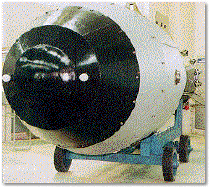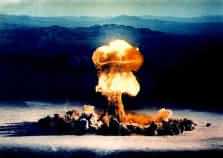Nuclear EnergyIntroduction"The discovery of nuclear chain reactions need not bring about the destruction of mankind any more than did the discovery of matches. We only must do everything in our power to safeguard against its abuse." Albert Einstein One of the most mysterious phenomena in the universe is the conversion of mass into energy. The whole universe is "powered" by this process. The energy radiated by stars, including the Sun, arises from nuclear reactions (called fusion) deep in their interiors. The release of nuclear energy occurs through the fusion of two light hydrogen nuclei into a heavier nucleus of helium.
SOHO: The Solar and Heliospheric Observatory Until about 1800, the principal fuel on our planet was wood, its
energy originating from solar energy stored in plants during their
lifetimes.
HistoryThe history of generating huge amounts of energy in a nuclear reaction, is basically the history of the atom bomb...Here are few important steps that led to the release of nuclear energy on demand.
The Equivalence of Mass and Energy
In 1905, Albert Einstein formulated his Special Theory of Relativity. According to this theory, mass can be considered to be another form of energy. In our daily life, mass and energy seem to be separate. In a
nuclear reaction, however, the energy released is often about a million
times greater than in a chemical reaction, and the change in mass
can easily be measured. E=mc2in which E is the energy equivalent (called mass energy) of mass m, and c is the speed of light. A very small amount of matter is equivalent to a vast amount of
energy. -------------------------------------------------------------------------------- "And Jesus said unto them, Because of your unbelief: for verily I say unto you, If ye have faith as a grain of mustard seed, ye shall say unto this mountain, Remove hence to yonder place; and it shall remove; and nothing shall be impossible unto you." Jesus Matthew, 17:20, The King James Bible Nuclear EnergyNuclear Energy is released during the splitting (fission) or fusing of atomic nuclei. The energy of any system, whether physical, chemical, or nuclear, is manifested by the system's ability to do work or to release heat or radiation. The total energy in a system is always conserved, but it can be transferred to another system or changed in form. According to the Law of Conservation of Energy, if we add up the total amount of energy in the universe (we can describe energy quantitatively with units such as Joules or kilowatt-hours), the total amount never changes. In other words, energy is neither created nor lost, even though it may be converted from one form to another. Thus the law of conservation of energy is really the law of conservation of mass-energy. The AtomThe atom consists of a small, massive, positively charged core,
nucleus, surrounded by electrons.
Protons are affected by all four of the fundamental forces that govern all interactions between particles and energy in the universe.
Chemical ElementsThe number of protons in the nucleus of an atom determines what kind of chemical element it is. All substances in nature are made up of combinations of the 92 different chemical elements, substances that cannot be broken into simpler substances by chemical processes. The atom is the smallest part of a chemical element that still retains the properties of the element. The number of protons in each atom can range from one in the hydrogen atom to 92 in the uranium atom, the heaviest naturally occurring element. For a very different and controversial theory
of the atom Another controversial theory: Metaparticles The NucleusThe nucleus contains most of the mass of the atom. It is itself composed of neutrons and protons bound together by very strong nuclear forces, much greater than the electrical forces that bind the electrons to the nucleus. The nucleus of an atom is described by these characteristics:
The Nuclear Binding EnergyThe total energy required to break up a nucleus into its
constituent protons and neutrons can be calculated from
If we divide the binding energy of a nucleus by the number of protons and neutrons (number of nucleons), we get the binding energy per nucleon. This is the common term used to describe nuclear reactions because atomic numbers vary and total binding energy would be a relative term dependent upon that. The following figure, called the binding energy curve, shows a plot of nuclear binding energy as a function of mass number. The peak is at iron (Fe) with mass number equal to 56.
The binding energy per nucleon is a
function of the mass number The rising of the binding energy curve at low mass numbers, tells us that energy will be released if two nuclides of small mass number combine to form a single middle-mass nuclide. This process is called nuclear fusion. The eventual dropping of the binding energy curve at high mass numbers tells us on the other hand, that nucleons are more tightly bound when they are assembled into two middle-mass nuclides rather than into a single high-mass nuclide. In other words, energy can be released by the nuclear fission, or splitting, of a single massive nucleus into two smaller fragments. Nuclear FusionThe binding energy curve shows that energy can be released if two light nuclei combine to form a single larger nucleus. This process is called nuclear fusion. The process is hindered by the electrical repulsion that acts to prevent the two particles from getting close enough to each other to be within range and "fusing."
Nuclear energy, measured in millions of electron volts (MeV), is released by the fusion of two light nuclei, as when two heavy hydrogen nuclei, deuterons, combine in the reaction
producing a helium-3 atom, a free neutron, and 3.2 MeV (3.2x106eV). Although the energy release in the fusion process is
less per nuclear reaction than in fission, 0.5 kg (1.1 lb) of the
lighter material contains many more atoms; thus, the energy liberated
from 0.5 kg (1.1 lb) of hydrogen-isotope fuel is equivalent to that of
about 29 kilotons of TNT, or almost three times as much as from
uranium. This estimate, however, is based on complete fusion of all
hydrogen atoms. Fusion reactions occur only at temperatures of several
millions of degrees, the rate increasing enormously with increasing
temperature; such reactions consequently are known as thermonuclear (heat-induced)
reactions. Strictly speaking, the term thermonuclear implies that
the nuclei have a range (or distribution) of energies characteristic of
the temperature. This plays an important role in making rapid fusion
reactions possible by an increase in temperature. Thermonuclear Fusion in the Sun and other Stars The sun radiates energy at the rate of 3.9 X 1026 W (watts) and has been doing so for several billion years. The sun burns hydrogen in a "nuclear furnace." The fusion reaction in the sun is a multi-step process in which hydrogen is burned into helium, hydrogen being the "fuel" and helium the "ashes." Hydrogen burning has been going on in the sun for about 5 billion years and calculations show that there is enough hydrogen left to keep the sun going for about the same length of time into the future. The burning of hydrogen in the sun's core is alchemy on a grand scale in the sense that one element is turned into another. Fusion takes place when the nuclei of hydrogen atoms with one proton each fuse together to form helium atoms with two protons. A standard hydrogen atom has one proton in its nucleus. There are two isotopes of hydrogen which also contain one proton, but contain neutrons as well. Deuterium contains one neutron while Tritium contains two. Deep within the star, A deuterium atom combines with a tritium atom. This forms a helium atom and an extra neutron. In the process, an incredible amount of energy is released. When the star's supply of hydrogen is used up, it begins to convert
helium into oxygen and carbon. As a star evolves and becomes still
hotter, other elements can be formed by other fusion reactions. If the
star is massive enough, it will continue until it converts carbon and
oxygen into neon, sodium, magnesium, sulfur and silicon. Eventually,
these elements are transformed into calcium, iron, nickel, chromium,
copper and others until iron is formed. When the core becomes primarily
iron, the star's nuclear reaction can no longer continue. Eements more
massive than those with atomic number equal to 56 (iron) cannot be
manufactured by further fusion processes as atomic number equal to 56
makes the peak of the binding energy curve. If nuclides were to fuse
after that, then energy would be consumed as opposed to produced. Nuclear FissionNuclear energy is also released when the fission of a heavy
nucleus such as
producing cesium-140, rubidium-93, three neutrons, and 200 MeV. The fission process initiated by the absorption of one neutron in uranium-235 releases about 2.5 neutrons, on the average, from the split nuclei. The neutrons released in this manner quickly cause the fission of two more atoms, thereby releasing four or more additional neutrons and initiating a self-sustaining series of nuclear fissions, or a chain reaction, which results in continuous release of nuclear energy. Using the binding energy curve, we can estimate the energy released in this fission process. From this curve, we see that for heavy nuclides (mass about 240u), the mean biding energy per nucleon is about 7.6MeV. For middle-mass nuclides (mass about 120), it is about 8.5 MeV. This difference in total binding energy between a single large nucleus and two fragments (assumed to be equal) into which it may be split is then close to 200MeV. This is a relatively large amount of released energy per fission event. When a chain reaction occurs, many atoms and nuclei are involved so lots of energy is released. Fission in Nuclear Reactors To make large-scale use of the energy released in fission, one fission event must trigger another, so that the process spreads throughout the nuclear fuel as in a set of dominos. The fact that more neutrons are produced in fission than are consumed raises the possibility of a chain reaction. Such a reaction can be either rapid (as in an atomic bomb) or controlled (as in a reactor). Core of the US Geological Survey (USGS) In a nuclear reactor, control rods made of cadmium or graphite or some other neutron-absorbing material are used to regulate the number of neutrons. The more exposed control rods, the less neutrons and vice versa. This also controls the multiplication factor k which is the ratio of the number of neutrons present at the beginning of a particular generation to the number present at the beginning of the next generation. For k=1, the operation of the reactor is said to be exactly critical, which is what we wish it to be for steady-power operation. Reactors are designed so that they are inherently supercritical (k>1); the multiplication factor is then adjusted to the critical operation by inserting the control rods.
An unavoidable feature of reactor operation is the accumulation of radioactive wastes, including both fission products and heavy "transuranic" nuclides such as plutonium and americium. Nuclear WeaponsIn the 20th century, the rapid advance of industry and modern technology greatly increased both the destructive power of armed forces and the capacity of societies both to resist and to recover from an attack. Nuclear weapons carry the possibilities of destruction to a new level and are able to inflict far greater damage within a few hours than previously resulted from years of warfare. This not only makes the consequences of war worse but also raises new concerns about controlling such a destructive process. Indeed, nuclear weapons have not been used in war since the first two atomic bombs were dropped on Japan in 1945, but many countries, including many Third World countries, now have nuclear weapons. Nuclear Weapons are explosive devices designed to release nuclear energy on a large scale for military reasons. The first atomic bomb (or A-bomb), was tested on July 16, 1945, at Alamogordo, New Mexico.
Although nuclear bombs were originally developed as strategic weapons to be carried by large bombers, nuclear weapons are now available for a variety of both strategic and tactical applications. Not only can they be delivered by different types of aircraft, but rockets and guided missiles of many sizes can now carry nuclear warheads and can be launched from the ground, the air, or underwater. Large rockets can carry multiple warheads for delivery to separate targets.
The first USSR's ICBM thermonuclear warhead The Atom BombThe atomic bomb works by a physical phenomenon known as fission. In this case, particles, specifically nuclei, are split and great amounts of energy are released. This energy is expelled explosively and violently in the atomic bomb. The massive power behind the reaction in an atomic bomb arises from the forces that hold the atom together called the strong nuclear force.
Uranium is not the only material used for making atomic bombs. Another material is the element Plutonium, in its isotope Pu-239. However, Plutonium will not start a fast chain reaction by itself. The material is not fissionable in and of itself, but may act as a catalyst to the greater reaction. The bomb basically works with a detonating head starting off the explosive chain reaction. The Chain ReactionWhen a uranium or other suitable nucleus fissions, it breaks up into a pair of nuclear fragments and releases energy. At the same time, the nucleus emits very quickly a number of fast neutrons, the same type of particle that initiated the fission of the uranium nucleus. This makes it possible to achieve a self-sustaining series of nuclear fissions; the neutrons that are emitted in fission produce a chain reaction, with continuous release of energy.
Fission of uranium 235 nucleus. When a U-235 atom splits, it gives off energy in the form of heat and Gamma radiation, which is the most powerful form of radioactivity and the most lethal. When this reaction occurs, the split atom will also give off two or three of its "spare" neutrons, which are not needed to make either of the parts after splitting. These spare neutrons fly out with sufficient force to split other atoms they come in contact with. In theory, it is necessary to split only one U-235 atom, and the neutrons from this will split other atoms, which will split more...so on and so forth. This progression does not take place arithmetically, but geometrically. All of this will happen within a millionth of a second. Critical MassA small sphere of pure fissile material, such as uranium-235, about
the size of a golf ball, would not sustain a chain reaction. Too many
neutrons escape through the surface area, which is relatively large
compared with its volume, and thus are lost to the chain reaction. In a
mass of uranium-235 about the size of a baseball, however, the number of
neutrons lost through the surface is compensated for by the neutrons
generated in additional fissions taking place within the sphere. The
minimum amount of fissile material (of a given shape) required to
maintain the chain reaction is known as the critical mass.
Increasing the size of the sphere produces a supercritical assembly, in
which the successive generations of fissions increase very rapidly,
leading to a possible explosion as a result of the extremely rapid
release of a large amount of energy. Detonation of Atomic BombsVarious systems have been devised to detonate the atomic bomb. The simplest system is the gun-type weapon, in which a projectile made of fissile material is fired at a target of the same material so that the two weld together into a supercritical assembly. The atomic bomb exploded by the United States over Hiroshima, Japan, on August 6, 1945, was a gun-type weapon. It had the energy of anywhere between 12.5 and 15 kilotons of TNT. Three days later the United States dropped a second atomic bomb over Nagasaki, Japan, with the energy equivalent of about 20 kilotons of TNT.
Regardless of the method used to attain a supercritical assembly, the chain reaction proceeds for about a millionth of a second, liberating vast amounts of heat energy. The extremely fast release of a very large amount of energy in a relatively small volume causes the temperature to rise to tens of millions of degrees. The resulting rapid expansion and vaporization of the bomb material causes a powerful explosion. The Hydrogen BombThe Hydrogen bomb works on a different physical principle known as nuclear fusion. In nuclear fusion, the nuclei of atoms join together, or fuse to form a heavier nucleus (specifically, nuclei of the isotopes of hydrogen combine to form a heavier helium nucleus). This happens only under very hot conditions. The explosion of an atomic bomb attached to a hydrogen bomb provides the heat to start fusion. Fusion releases energy due to the overall loss in mass. The total of the masses of the particles which go into a fusion reaction is bigger than the total of the masses of the particles which come out. The "mass difference" takes the form of energy. The hydrogen bomb is thousands of times more powerful than an atomic bomb. There have not been any hydrogen bombs used in warfare, however there have been hydrogen bomb tests. Most of these tests are done underwater due to risk of destruction. The H-bomb is extremely powerful. A common hydrogen bomb has the power of up to 10 megatons. This atomic bomb dropped on Hiroshima, Japan which killed over 140,000 people had the power of 13 kilotons. All the explosions in World War II totaled "only" 2 megatons - 20% of the power of ONE common hydrogen bomb. Thermonuclear TestsOn November 1, 1952, a full-scale, successful experiment was conducted by the United States with a fusion-type device. This test, called Mike, which was part of Operation Ivy, produced an explosion with power equivalent to several million tons of TNT (that is, several megatons).
On March 1, 1954, the United States exploded a fusion
bomb with a power of 15 megatons. It created a glowing fireball, more
than 4.8 km (more than 3 mi) in diameter, and a huge mushroom cloud,
which quickly rose into the stratosphere.
Fission-Fusion-Fission BombThe thermonuclear bomb exploded in 1954 was a three-stage weapon. The first stage consisted of a big A-bomb, which acted as a trigger. The second stage was the H-bomb phase resulting from the fusion of deuterium and tritium within the bomb. In the process helium and high-energy neutrons were formed. The third stage resulted from the impact of these high-speed neutrons on the outer jacket of the bomb, which consisted of natural uranium, or uranium-238. No chain reaction was produced, but the fusion neutrons had sufficient energy to cause fission of the uranium nuclei and thus added to the explosive yield and also to the radioactivity of the bomb residues. The Neutron Bomb - Clean H-BombOn the average, about 50 percent of the power of an H-bomb
results from thermonuclear-fusion reactions and the other 50 percent
from fission that occurs in the A-bomb trigger and in the uranium jacket.
A clean H-bomb is defined as one in which a significantly smaller
proportion than 50 percent of the energy arises from fission. Because
fusion does not produce any radioactive products directly, the fallout
from a clean weapon is less than that from a normal or average H-bomb of
the same total power. If an H-bomb were made with no uranium jacket but
with a fission trigger, it would be relatively clean. Perhaps as little
as 5 percent of the total explosive force might result from fission; the
weapon would thus be 95 percent clean. The enhanced-radiation fusion
bomb, also called the neutron bomb, which has been tested by the United
States and other nuclear powers, does not release long-lasting
radioactive fission products. However, the large number of neutrons
released in thermonuclear reactions is known to induce radioactivity in
materials, especially earth and water, within a relatively small area
around the explosion. Effects of Nuclear WeaponsNuclear Explosions produce both immediate and delayed destructive effects. Blast, thermal radiation, prompt ionizing radiation are produced and cause significant destruction within seconds or minutes of a nuclear detonation. The delayed effects, such as radioactive fallout and other possible environmental effects, inflict damage over an extended period ranging from hours to years.
The effects of nuclear weapons were carefully observed, both after the bombings of Hiroshima and Nagasaki and after many test explosions in the 1950s and early 1960s. The basic effects of nuclear explosion are:
Blast EffectsAs is the case with explosions caused by conventional weapons, most of the damage to buildings and other structures from a nuclear explosion results, directly or indirectly, from the effects of blast. The very rapid expansion of the bomb materials produces
a high-pressure pulse, or shock wave, that moves rapidly outward from
the exploding bomb. In air, this shock wave is called a blast wave
because it is equivalent to and is accompanied by powerful winds of much
greater than hurricane force. Damage is caused both by the high excess (or
overpressure) of air at the front of the blast wave and by the extremely
strong winds that persist after the wave front has passed. The degree of blast damage suffered on the ground depends on:
Assuming a height of burst that will maximize the damage area, a 10-kiloton bomb will cause severe damage to wood-frame houses, such as are common in the United States, to a distance of more than 1.6 km (more than 1 mi) from ground zero and moderate damage as far as 2.4 km (1.5 mi). (A severely damaged house probably would be beyond repair.) The damage radius increases with the power of the bomb, approximately in proportion to its cube root. If exploded at the optimum height, therefore, a 10-megaton weapon, which is 1,000 times as powerful as a 10-kiloton weapon, will increase the distance tenfold, that is, out to 17.7 km (11 mi) for severe damage and 24 km (15 mi) for moderate damage of a frame house. When a nuclear weapon is detonated on or near Earth's surface, the blast digs out a large crater. Some of the material that used in be in the crater is deposited on the rim of the crater; the rest is carried up into the air and returns to Earth as radioactive fallout. An explosion that is farther above the Earth's surface than the radius of the fireball does not dig a crater and produces negligible immediate fallout. For the most part, a nuclear blast kills people by indirect means rather than by direct pressure. Thermal EffectsApproximately 35 percent of the energy from a nuclear
explosion is an intense burst of thermal radiation, i.e., heat. The
effects are similar to the effect of a two-second flash from an enormous
sunlamp. The very high temperatures attained in a nuclear explosion
result in the formation of an extremely hot incandescent mass of gas
called a fireball. Since the thermal radiation travels at roughly the speed
of light, the flash of light and heat precedes the blast wave by several
seconds, just as lightning is seen before thunder is heard. Penetrating RadiationBesides heat and blast, an exploding nuclear bomb has a
unique effectit releases penetrating nuclear radiation, which is quite
different from thermal (or heat) radiation. Direct radiation occurs at
the time of the explosion. It can be very intense, but its range is
limited. For large nuclear weapons, the range of intense direct
radiation is less than the range of lethal blast and thermal radiation
effects. However, in the case of smaller weapons, direct radiation may
be the lethal effect with the greatest range. Direct radiation did
substantial damage to the residents of Hiroshima and Nagasaki. Human
response to ionizing radiation is subject to great scientific
uncertainty and intense controversy. It seems likely that even small
doses of radiation do some harm. Spectacular photo album of
Nuclear Explosions Electromagnetic PulseElectromagnetic pulse (EMP) is an electromagnetic wave similar to radio waves, which results from secondary reactions occurring when the nuclear gamma radiation is absorbed in the air or ground. It differs from the usual radio waves in two important ways. First, it creates much higher electric field strengths. Whereas a radio signal might produce a thousandth of a volt or less in a receiving antenna, an EMP pulse might produce thousands of volts. Secondly, it is a single pulse of energy that disappears completely in a small fraction of a second. In this sense, it is rather similar to the electrical signal from lightning, but the rise in voltage is typically a hundred times faster. This means that most equipment designed to protect electrical facilities from lightning works too slowly to be effective against EMP. An attacker might detonate a few weapons at high altitudes in an effort to destroy or damage the communications and electric power systems of the victim. There is no evidence that EMP is a physical threat to humans. However, electrical or electronic systems, particularly those connected to long wires such as power lines or antennas, can undergo damage. There could be actual physical damage to an electrical component or a temporary disruption of operation. Fallout RadiationFallout radiation is received from particles that are made radioactive by the effects of the explosion, and subsequently distributed at varying distances from the site of the blast. While any nuclear explosion in the atmosphere produces some fallout, the fallout is far greater if the burst is on the surface, or at least low enough for the firebal to touch the ground. The significant hazards come from particles scooped up from the ground and irradiated by the nuclear explosion. The radioactive particles that rise only a short distance (those in the "stem" of the familiar mushroom cloud) will fall back to earth within a matter of minutes, landing close to the center of the explosion. Such particles are unlikely to cause many deaths, because they will fall in areas where most people have already been killed. However, the radioactivity will complicate efforts at rescue or eventual reconstruction. The radioactive particles that rise higher will be carried some distance by the wind before returning to Earth, and hence the area and intensity of the fallout is strongly influenced by local weather conditions. Much of the material is simply blown downwind in a long plume. Rainfall also can have a significant influence on the ways in which radiation from smaller weapons is deposited, since rain will carry contaminated particles to the ground. The areas receiving such contaminated rainfall would become "hot spots," with greater radiation intensity than their surroundings. Climatic EffectsBesides the blast and radiation damage from individual bombs, a large-scale nuclear exchange between nations could conceivably have a catastrophic global effect on climate. This possibility, proposed in a paper published by an international group of scientists in December 1983, has come to be known as the "nuclear winter" theory. According to these scientists, the explosion of not even one-half of the combined number of warheads in the United States and Russia would throw enormous quantities of dust and smoke into the atmosphere. The amount could be sufficient to block off sunlight for several months, particularly in the northern hemisphere, destroying plant life and creating a subfreezing climate until the dust dispersed. The ozone layer might also be affected, permitting further damage as a result of the sun's ultraviolet radiation. Were the results sufficiently prolonged, they could spell the virtual end of human civilization. The nuclear winter theory has since become the subject of enormous controversy. It found support in a study released in December 1984 by the U.S. National Research Council, and other groups have undertaken similar research. In 1985, however, the U.S. Department of Defense released a report acknowledging the validity of the concept but saying that it would not affect defense policies. Alıntı: http://www.world-mysteries.com/sci_9.htm Hiçbir yazı/ resim izinsiz olarak kullanılamaz!! Telif hakları uyarınca bu bir suçtur..! Tüm hakları Çetin BAL' a aittir. Kaynak gösterilmek şartıyla siteden alıntı yapılabilir. The Time Machine Project © 2005 Cetin BAL - GSM:+90 05366063183 -Turkiye/Denizli Ana Sayfa /İndex /Roket bilimi / Time Travel Technology /Ziyaretçi Defteri / Duyuru / UFO Technology |
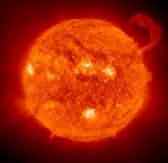
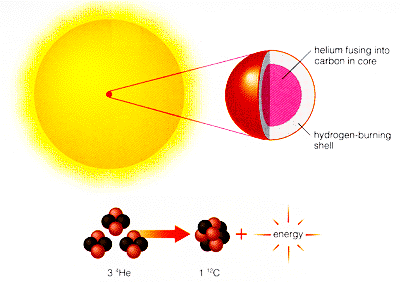
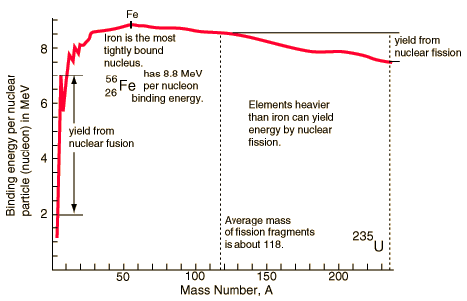
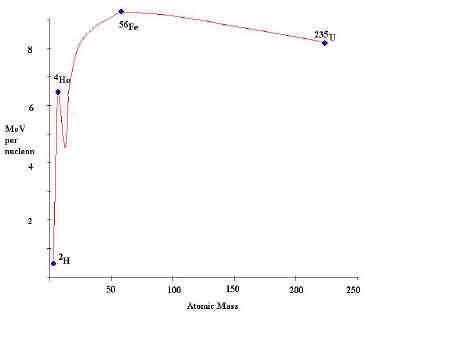

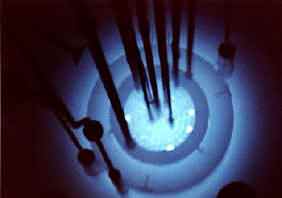
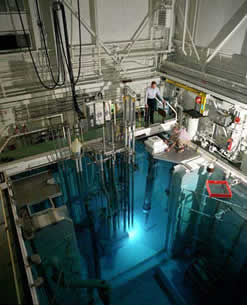
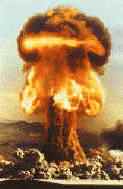
![[The first ICBM thermonuclear warhead]](PU/sci9icbm.gif)
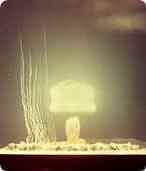
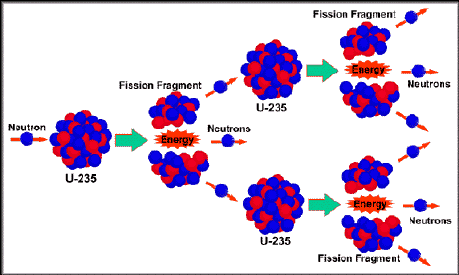
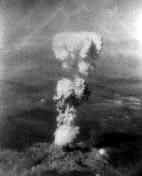
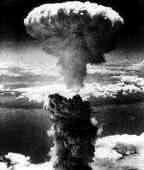
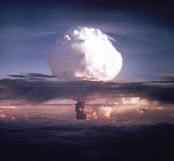
![[The world's first hydrogen bomb]](PU/sci9sovhb.gif)
